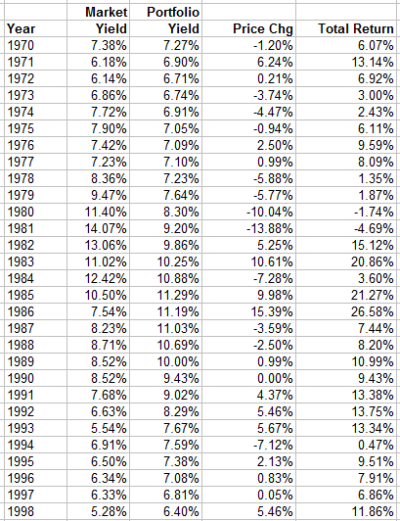poorgeezer
Dryer sheet wannabe
- Joined
- Mar 7, 2011
- Messages
- 12
I retired in 2005 and am currently living on savings. I am 58 years old and will begin drawing on my retirement IRA with Vanguard at age 59 1/2. My concern is about my lack of understanding on how the Total Bond Index funds actually work. The concern being that if we get into a rising rate environment it seems that the bond fund would shrivel up similar to the way things went in the early 80's. Is this a valid concern or am I missing something and if that is the case what should I do? My AA is about 50/50 in index funds and I have enough cash on hand to coast approx. five years.
Thanks for your thoughts on this.
PG
Thanks for your thoughts on this.
PG

